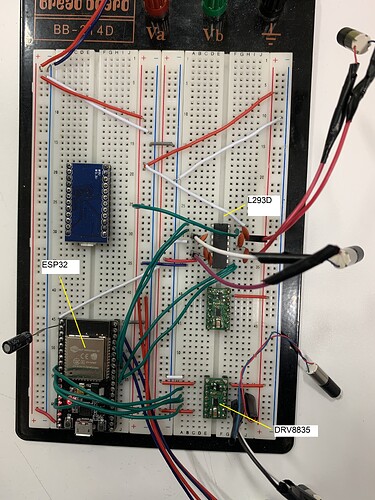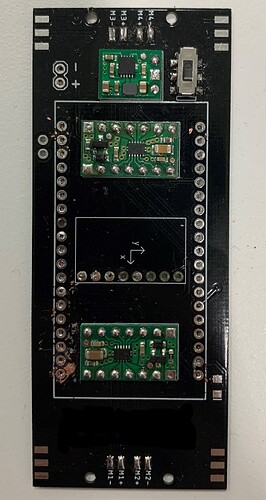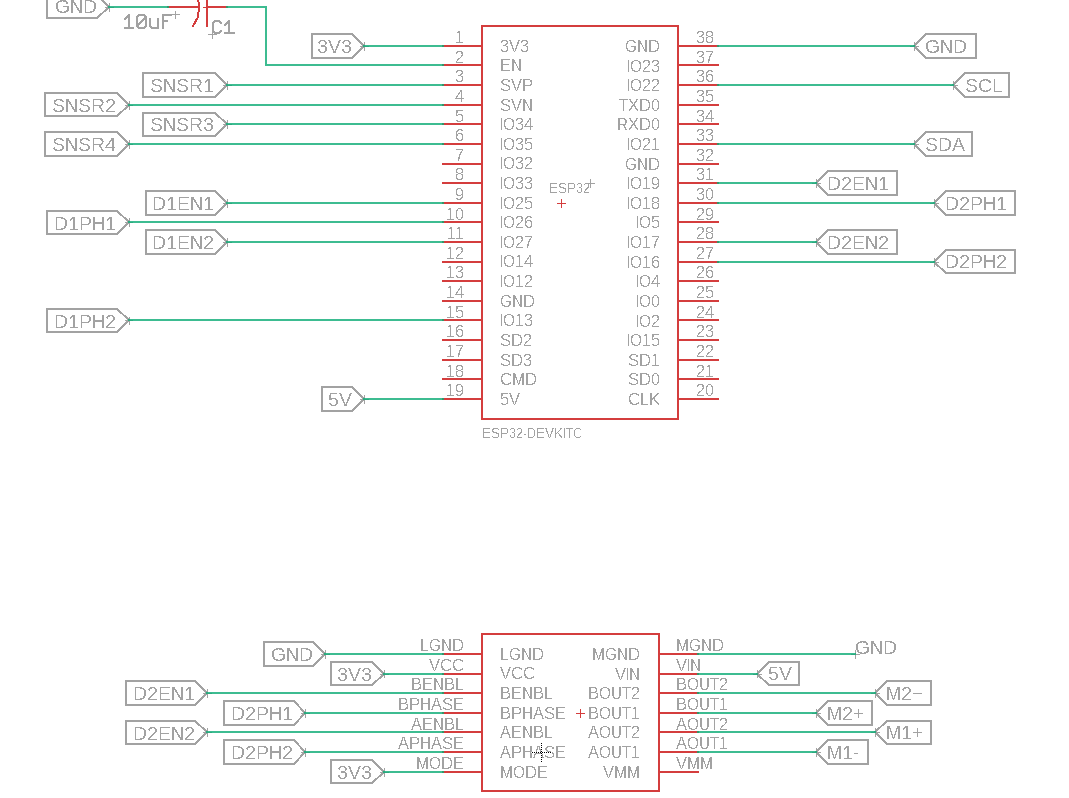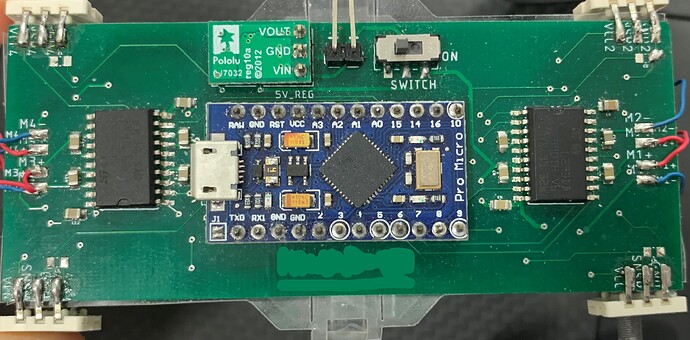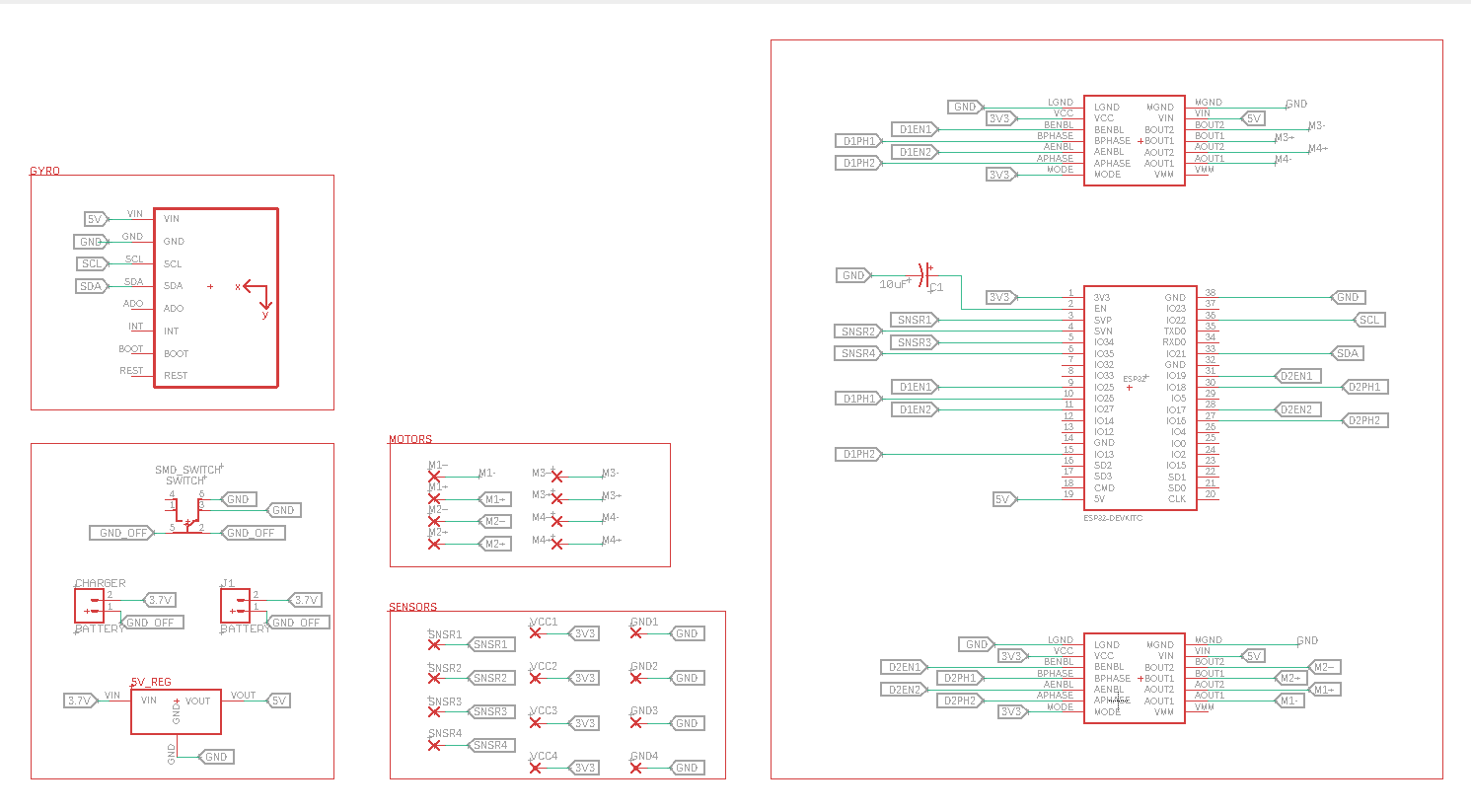Hello,
We have a problem with the DC motor driver DRV8835 that we have soldered to the PCB I have attached below. Prior to this driver we were using L293D h-bridges to run these DC motors and never experienced an issue. We are using ESP32s microcontroller and designed a new PCB (schematic given below) with two DRV8835 drivers to control four DC motors.
Before designing the PCB we set up a circuit on a breadboard (setup is also given down below) and everything was working fine. The motors got slightly warmer with DRV8835 on the breadboard but they were running at the same speeds. But with the new drivers, PCB is drawing twice as much as the current we had on the breadboard setup and the motors heat up way more than they did with the previous driver and on the breadboard. We tried attaching capacitors to the driver’s power and motor terminals as well as resoldering, but it didn’t help much. Are there any suggestions to this problem that we can try implementing? We are working on robotics but we don’t come from an electronics background so any suggestions are appreciated.
Thanks!
The L293 driver is very inefficient and suffers from large internal voltage drops (up to about 4 V), wasting power supply energy as heat. Since the DRV8835 is much more efficient, the motors “see” a much higher power supply voltage, will deliver more power and may overheat if the power supply voltage is too high.
What is the motor power supply voltage? Post a complete schematic of the system.
Breadboards should not be used with motors. The tracks are not designed for high currents and will burn. Instead, solder connections and/or use high current connectors. Never change wiring when anything is powered.
We are giving 5V to the PCB from the power supply, keep in mind that there is a voltage regulator on the PCB as it can be seen. We also tried giving 3.7 V only to the motors which still resulted in them overheating and running at high speed.
Sorry, your reply makes no sense to me.
-
Post a complete schematic diagram of the setup.
-
Specify the load on the motor shafts. With no load, they should not overheat when powered by 6V.
-
See the warning about load torque on the motor product page.
We are sure that the problem is not about the torque load since the motors don’t have any load on them, they are only connected to the PCB. The input motor voltage is regulated 5V. Our old board is also attached, we only changed the drivers from L293D to DRV8835 and the motors started overheating. That’s pretty much the only change we made. We never had any issues with the old board even on an actual robot (motors loaded).
Test the motors by powering them from 5V, with no load.
There is NO possibility that the driver could cause the motors 6V motors you linked to overheat, if the motor power supply is clean 5VDC and the motors have no shaft load.
The circuit diagram is incomplete, as part IDs, power supply details and some connections are missing.

